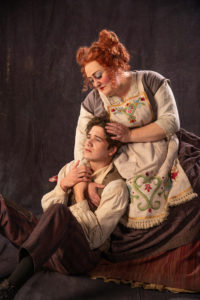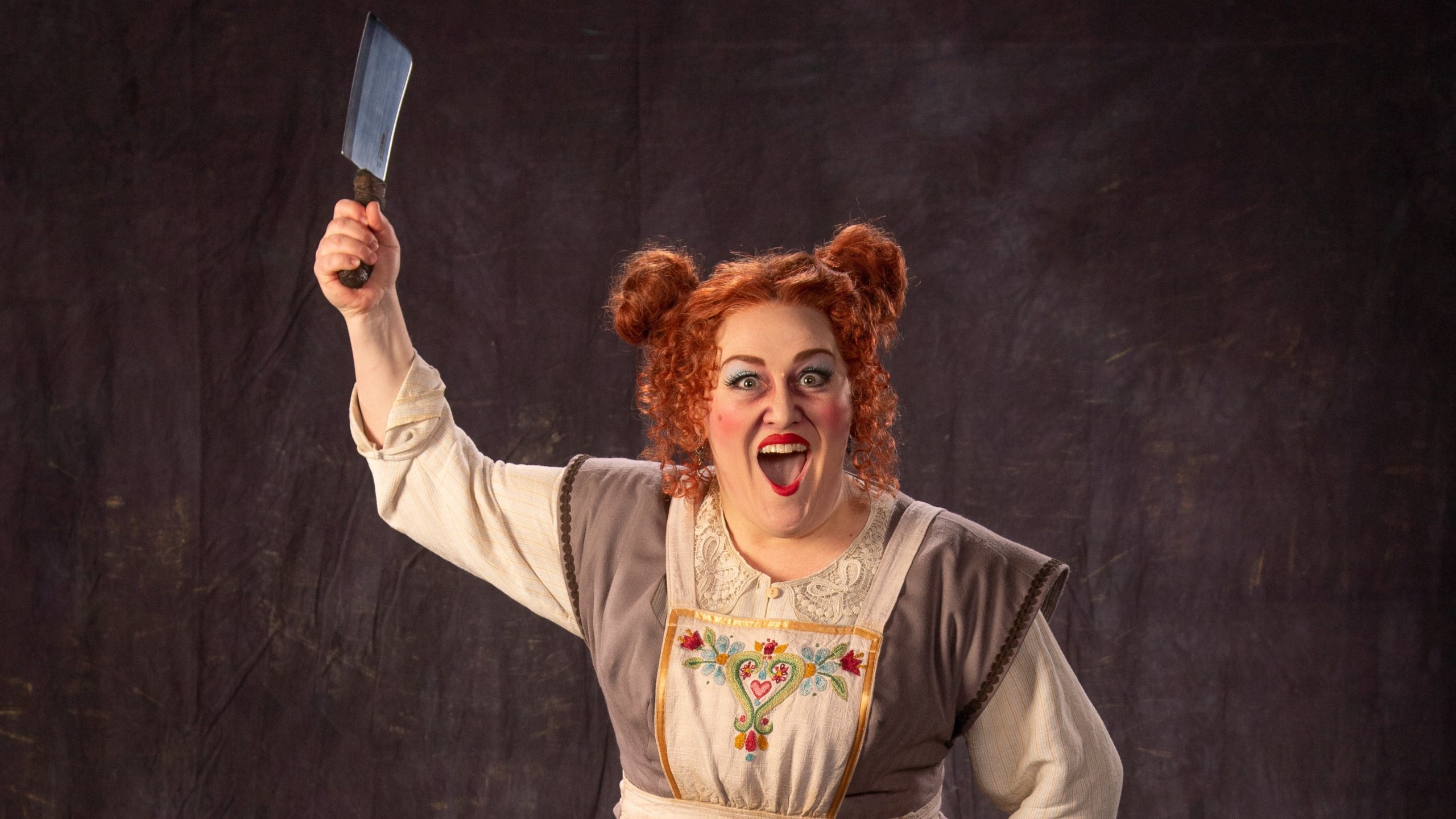CEDAR CITY — The decision to mount a musical in a space modeled after Shakespeare‘s original Globe Theatre may seem odd. But when that musical is Sweeney Todd, the decision makes perfect sense. Sweeney Todd is a revenge tragedy, a subgenre that includes Hamlet and Othello. Indeed, Shakespeare’s first revenge tragedy is Titus Andronicus, which — like Sweeney Todd — features meat pies made from human corpses.

Brad Carroll was entrusted with directing this landmark production for the Festival. Thanks to Carroll’s attentive directing, Sweeney Todd has an almost unbearable level of tension, especially during the first rendition of “Pretty Women” and the bakehouse scenes. I was also impressed by the controlled chaos of “City on Fire” and the animalistic movements of the cast during the asylum scenes. Carroll also emphasizes the rich contrasts of Sweeney Todd, with the musical loveliness of the second act’s version of “Johanna” happening while people are being murdered being a particularly creepy juxtoposition.
As much as I adore Carroll’s direction, there were some minor moments that detracted from the show. During “Kiss Me” and “Ladies in Their Sensitivities,” Carroll placed Antony and Johanna on a downstage couch and had the beadle and judge act out their scene (taking place elsewhere) in nearly the same space. It was an odd blocking choice that made it seem like all four characters were actually in the same location. Also, in the second act, the stage smoke in the bakehouse was too thick for me to clearly see the body of the beadle appear upstage as it exited the chute. Finally, “God, That’s Good” could have been more rousing and energetic.

J. Michael Bailey plays the title character as a brooding man who is seething with rage. Beneath the quiet exterior is a temper that can explode at any moment (and does at different points in the show). Bailey’s performance is nuanced, which prevents Sweeney from being oversimplified into a monster. Anyone who saw Bailey as Jean Valjean in Les Misérables at the Utah Shakespeare Festival in 2012 will be unsurprised to learn that he handles the operatic score effortlessly. A decade has not diminished Bailey’s vocal strength at all, and he maximizes the power of the score with his sonorous voice and lush tone.
The role of Mrs. Lovett seems tailored to Bree Murphy‘s talents. Her Mrs. Lovett is as deranged as Sweeney, and I loved the disturbing twists she put into the role. Murphy sings out the phrase “The Worst Pies in London” like a slogan, and the way she revels in her “bright idea” of using Sweeney’s victims in her meat pies is downright demented. Her musical technique is perfect (especially in “Down By the Sea” and “Poor Thing”), but she never sacrifices character or emotion to sing the score perfectly.
Indeed, the entire cast sings the score exquisitely, and I commend music director Jeremy Mann for making Stephen Sondheim‘s complex score meet its full potential. The act one version of “Johanna” is the show’s simplest song, and the bright tenor vocals of Nathan Haltiwanger as Anthony Hope and the dulcet soprano of Lucy Austin as Johanna enhance the melody and emphasize the youthfulness of the characters. Rob Tucker as Beadle Banford gave gravitas to his songs and scenes, and his final note in “Ladies in Their Sensitivities” is a delightful surprise.
Bill Black‘s costume designs depicted the seedy underbelly of Victorian London via dirtied and tattered costume pieces for the ensemble. After intermission, Mrs. Lovett and Sweeney were dressed in much more refined clothes, a wonderful shift that quietly showed the characters’ improved economic conditions. The fancier signs for their business establishments, as part of Linda Buchanan‘s set, were an additional signal that the two main characters were macabre social climbers. Stephen C. Jones‘s lighting design was the ultimate mood enhancer, and splashing the set with deep red light with every murder added to the intensity of the moment.
So much goes right in this production of Sweeney Todd. The script (by Hugh Wheeler) is intense and deeply moving. In other words, it is Shakespearean. Audiences will savor this production of Sweeney Todd. I recommend seeing it “three times.”
[box]The Utah Shakespeare Festival production of Sweeney Todd plays various dates at 8 PM through September 9 at the Engelstad Shakespeare Theatre on the campus of Southern Utah University. Tickets are $30-90. For more information, visit bard.org.[/box]

